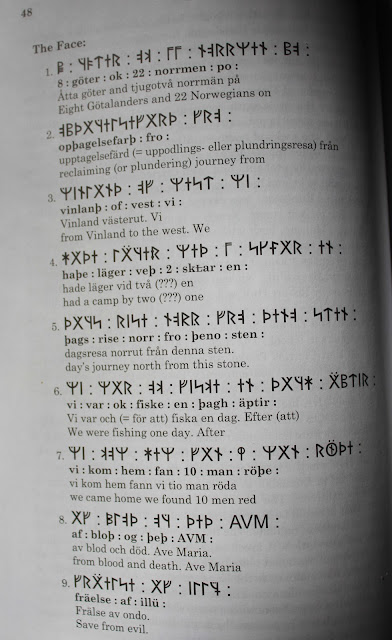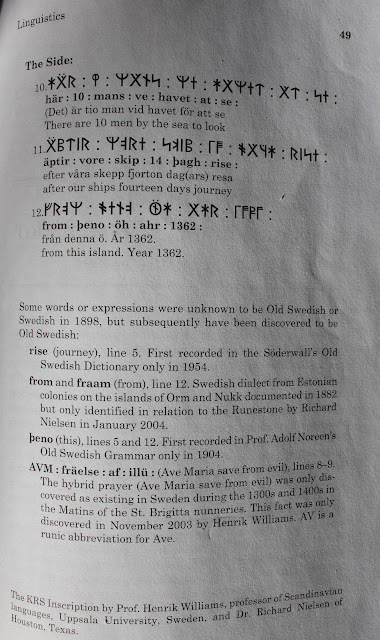For comparing and contrasting purposes, here are offered several Kensington Runestone inscription translations, some popular over the years. For example, the translation seen just below from Hjalmar Holand had stood the test of time for several decades of his own life--and it remains as one of my own favorites for what I believe to be general overall accuracy.
There continues to be notable differences of opinions about some of the more modern translations, and who is right or wrong over specific points of "accuracy" is sometimes hard to say. Zeroing in on several specific runes and words can be, in the end, very difficult, and I therefore humbly advise anyone from thinking that there is only one truly accurate version of events. Actually, there is still so much uncertainty that question marks are sometimes offered instead of words in some translations.
Holand's book is from 1940; Kehoe's book is from 2005; Wolter's book is from 2009; Reiersgord's book is from 2001. The latter book gives Holand's version, but also gives the old Blegen/Wahlgren version, too.









Comments
Post a Comment